If you’ve been looking for a fitness tracker the chances are you have come across Fitbit devices. They are high-quality and popular devices. But which is the best Fitbit for seniors? Read on to find out!
Fitness trackers, activity bracelets, and sports watches have become very popular in recent years due to everyone owning a smartphone and the technology getting cheaper. Fitness trackers are a great way to gather information about your activity levels and some of the devices even offer valuable information about your health like sleep quality and heart rate.
Fitbit is one of the largest fitness tracker manufacturers and they are known for their advanced sleep tracking and heart rate tracking. Recent devices also feature pulse oximeters for measuring blood oxygen levels.
These little trackers are a fascinating piece of technology. It’s almost unbelievable how much technology and sensor they’ve manages to pack in such a small device.
There are several Fitbit models on the market right now. But which Fitbit is the best for seniors? Let’s start by talking a bit about the different types of trackers and watches.
What are fitness trackers?
Fitness trackers are devices that track your activity and allow you to save and analyze your workouts over time with a smartphone app. There are several different types of activity trackers, including activity bracelets and rings, fitness trackers, and smartwatches.
All these different devices have similar functions but they will have a different amount of sensors, functions, and displays.
Activity bracelets and rings generally don’t have a screen and they require your smartphone or laptop to read the data. Activity bracelets usually have just a simple accelerometer that recognizes your steps and uses software and your individual variables to estimate your activity levels and spent calories.
Fitness trackers are a crossover between an activity bracelet and a smartwatch. They usually have a small screen that displays information like steps, calories and activity levels.
They can also have sensors for heart rate, blood oxygen levels, and elevation. They generally don’t have GPS but can usually be connected to your smartphone for positioning.
Here’s a great testimonial of the benefits of fitness trackers for seniors by HealthyBee (YouTube embed, content not created or owned by ElderStrength.com):
You can learn more about fitness trackers and activity bracelets in the article The Best Fitness Tracker For Seniors And The Elderly [2022].
Sport Watches Are More Advanced
Actual sport watches will have more sensors and displays. They will usually have built-in GPS for accurate tracking as well as a compass for navigation. They usually feature special training programs and heart rate monitoring functions for training in a certain heart rate interval.
They generally connect to a separate high-accuracy heart rate monitor that you wear around your chest instead of taking the heart rate from your wrist. This makes the heart rate readings more accurate. Naturally, sports watches will be more expensive than regular activity trackers and they are meant for more actual athletes training for sports.
Fitness trackers with heart rate monitoring these days are good enough for anyone trying to improve their fitness and health. They help you monitor your progress as well as provide useful health data about your sleep habits, heart rate, and activity levels.
One of the key things about fitness trackers is that they help you be more active. Most models (at least all Fitbit models) feature an activity reminder function.
The bracelet will vibrate and tell you to get moving if you haven’t been active enough. You will also get positive feedback when you hit your activity and exercise goals, this positive reinforcement is surprisingly motivating to most people and I recommend these devices to anyone looking for a way to get more active.
The story of Fitbit
Fitbit is an American company based in San Francisco and it’s considered the third largest activity tracker manufacturer (after Xiomi and Apple).
Fitbit was founded in 2007. The company was actually called Healthy Metrics Research before that and they had several years of product development in wearable technology by the time Fitbit was formed.
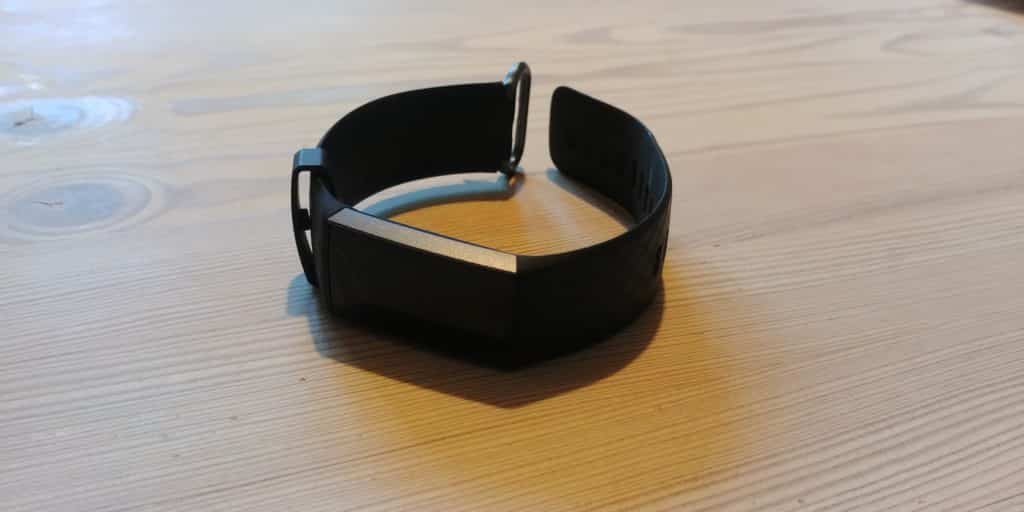
Fitbit is best known for its wast line of activity bracelets and fitness trackers. They have been the industry leader in adding new sensors and functionality to their trackers before the competition on several occasions.
They have models ranging from an affordable activity bracelet to full-on sport watches but the main focus of their line up definitely seems to be the fitness trackers that are geared towards the active home athletes with goal-oriented training programs and the “biohackers” that love to track every variable of their body. They are not really meant for professional athletes as they lack certain functions and accuracy.
In 2021 Fitbit was acquired by Google. For now, it seems this has been a good thing. Google has invested in the company and the new watches are packed with features.
Why Fitbit trackers are useful for seniors
So are fitness trackers really that useful for seniors? My answer is yes, they are. I have seen firsthand how some of my older colleagues, parents, and relatives have found these devices very useful and motivating.
They help you be active by reminding you to move when you have not been active enough. This is something people don’t realize many times. We are generally very bad at estimating how active we have been. This goes both ways as well. You can sometimes walk much more than you realize while exploring a new town for example or while shopping.
The fitness tracker tells you how many steps you’ve taken, how much you’ve spent calories, and how much your heart rate has elevated. This makes it much easier to compare days and weeks over time and get a realistic estimate of your activity levels. I promise you, the results will always surprise you!
As you see how much you move, it’s much easier to make lifestyle choices that allow more activity. Or maybe you don’t need any more activity and can feel content with the way you live right now. Either way it’s a win-win and takes the guesswork out.
Another great thing about fitness trackers is that they show you your sleep habits quite accurately. If you feel tired constantly and the tracker tells you that you only sleep 5 hours a night its really hard to neglect this information. You will likely start going to bed earlier and sleeping more or making a good night’s sleep a priority more often.
So as you can see, these little devices can be surprisingly useful! Let’s take a look at the best Fitbit for seniors.
Best Fitbit for seniors: The Fitbit Charge 5
So which of the Fitbit trackers on the market in 2023 is best for seniors? My recommendation is the Fitbit Charge 5. It is an advanced fitness tracker with top-of-the-line features for a reasonably affordable price.
I have owned the Fitbit Charge 2 and 3. I was very pleased with both watches but switched over to Garmin about a year ago. The reason I recommend the Charge 5 is that they’ve stuck with the simple core design that’s packed with features.
Compared to the Charge 3 the Charge 5 has much longer battery life (about 7 days), functional SpO2 sensor and heartrate variability monitoring. And GPS tracking! That’s an astounding amount of features in a compact watch at this price point.
The only reason I didn’t get it myself is that it wasn’t out when I got my Garmin watch. Charge 4 lacked stress monitoring
Features
Fitbit Charge 5 is a relatively compact fitness tracker with a touch screen and an interchangeable bracelet. The bracelet in the base model is made out of synthetic rubber with a matt finish and is available in several colors. I own the black one and really like the design.
The actual tracker has a full-size touch screen on the front side and a loading dock and heart rate sensors on the other side. The heart rate sensor flickers with a green light when you wear it because it uses LED technology to sense your heartbeat.
The overall design is very simplistic and sleek while managing to look more like a designer watch than a medical device. I really like to small form and sleek black look and I bet you will love it as well!
The construction
The device feels very sturdy and the fact that you can change the bracelet in case it gets damaged is very important. You don’t want to throw away a fully functional device just because you can’t wear it after all and the bracelet is the cheapest component of the tracks so its really nice they included the feature.
The tracker is waterproof up to 50 meters, so you can wear it while swimming or in the shower. I know, wearing an electronic device in the water feels strange but it’s completely safe! I kept taking it off when going into the shower at first but now I keep it on all the time except for recharging.
The recharging happens with an external charger that connects to a standard USB charger. The bracelet is connected to the charger with a sort of a clamp. It charges very fast, about an hour for a full charge and the battery lasts for a whole week! The only gripe about the charger is that you have to be careful to set it correctly or otherwise the charging pins won’t make a connection. So always check the device starts charging (shows a battery and percentage) before leaving it!
The sensors
Charge 5 has several sensors it uses to monitor your activity and health metrics. It has high-accuracy accelerometers for counting steps and recognizing movement patterns. An accelerometer is a sensor that recognizes acceleration. When you step, for example, this causes a fast acceleration and deceleration on each step, or essentially a vibration that the sensor picks up.
It can also recognize certain movement patterns and guess what type of activity you are performing from the accelerometer behavior, like running, cycling or kayaking. The Fitbit uses learning software to constantly improve how accurately the devices recognize movement patterns.
The second important sensor is the heart rate sensor. In the Fitbit Charge 5, this is on constantly, 24/7. This is an excellent feature because it makes the calorie consumption estimates much more accurate than in devices that simply use accelerometer data. It also allows for advanced sleep tracking as your heart rate varies during different sleep stages and this is definitely something Fitbit seems to do well.
The heart rate sensor will also produce a resting heart rate number for each day. This is based on several measurements during the rest. Generally speaking, your resting heart rate should go down as your fitness improves or you lose weight. It is also used to monitor stress and recovery because your heart rate variability changes as you are more stressed physically, mentally or emotionally.
The Charge 5 also has a built-in SpO2 sensor for monitoring blood oxygen levels. This would be most useful for monitoring possible apneas (breathing pauses) during sleep. And in theory for high altitude use for monitoring altitude sickness. But there are more accurate climbing watches for that.
The Charge 5 also has a built in GPS tracking. This means it can accurately track your walks and runs. The only con is that GPS takes a lot of power, so you can only run it for 5 hours with a full battery.
The screen
The screen of the Fitbit Charge 5 is larger than in the previous model Charge 4 and it’s a full touch screen. On the side of the screen, there is a pressure switch for turning the screen on but you can also double-tap the screen and it will turn on.
It also features a watch display feature. Meaning that when you turn the display to face you to look at the watch screen, it will turn on. This is a nice feature but unfortunately, it doesn’t always work and you then have to turn your wrist fast for it to activate. A small issue but can be a bit annoying if you really need to see the time and your other hand is occupied.
The starting screen is a watch that displays the time and depending on the watch you choose (there are several and you can change them from the app) it can display additional information like the date and step count.
By swiping the clock screen up you will get to see your current stats for the day. These include step count, active hours, heart rate, resting heart rate, walked distance, burned calories, walked stairs and slept hours.
If you swipe the screen right, you will find additional features like exercise selection, relaxation program, timers, alarms, weather information, and settings.
The exercise selection allows you to choose a specific program for activities for added accuracy. The device will recognize running, weight training, cycling and swimming usually automatically, but if you want to make sure to track your exercise correctly, you can activate the according program.
I like the screen for the simple and sleek look. It’s also easy to read because the resolution is pretty good and bright. What I don’t like about it is that you have to go through several menus if you want to activate the exercise programs, which I usually do at the gym or while running. But on the other hand, most users probably won’t even use this feature so It’s not really a deal breaker.
The Fitbit App
The app that you install on your smartphone (iOS or Android) pairs with the device and can be used for reading data as well as for controlling the device.
The app is free to use but there is a Premium membership that has a monthly fee of $ 9.99. This will give you additional health data but for most users, it’s definitely not mandatory.
The app shows you all the information you can read from the device but you get the additional information and can compare information over time.
My experience with the app is from my Fitbit Charge 3 from a year ago but I checked the app and much hasn’t changed since then.
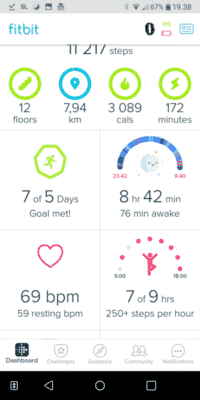
I really like how easy and intuitive the app is to use and the insights it gives based on your actions are generally very useful. I love for example how I can compare my amount of sleep and sleep quality to the average of men of my age.
Sleep tracking is one of my favorite features of the device because it seems very accurate. Any time I wake up feeling groggy and check the data, I can see I’ve had less than optimal amounts of REM or deep sleep. The sleep tracking shows you the time you were in bed, the sleep stages (light, REM, deep) and the time you were awake.
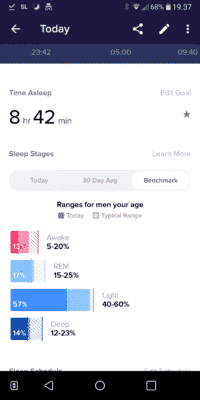
Other than the sleep tracking the app lets you browse through your heart rate, calorie consumption levels etc. over a long period of time. This makes the app great for tracking your fitness levels and I really like its functionality.
Pros
- Accurate
- High built quality
- Constant heart rate monitoring
- Good battery (7 days)
- Built in GPS
Cons
-
- Some features are behind a pay wall
Fitbit for seniors without a smartphone?
One common question about Fitbits and fitness trackers is whether you can use them without a smartphone. I have good news for you! You can use the Fitbit Charge 5 even without a smartphone.
But the bad news is that you will miss out on a lot of features as these devices are designed to be used with the phone app.
The Fitbit uses Bluetooth, a form of wireless data connection, to synchronize data between the Fitbit app and the tracker. It’s definitely designed with smartphones in mind but it’s good to know you don’t necessarily have to have one to use the fitness tracker.
You do need a computer, laptop, or tablet with a Bluetooth connection to activate the Fitbit. Once the Fitbit is activated you can simply read the daily data from the tracker or read it through the Fitbit App on the computer.
You can see your daily steps, active hours, heart rate, resting heart rate, walked distance, burned calories and hours slept simply from the tracker. You only need the app for more comprehensive data like sleep cycles and for progress over time.
Conclusion
I hope you found this review useful and if you are thinking about buying a fitness tracker, I think the Fitbit Charge 5 is a good choice.
Fitness trackers are an easy and affordable way to get you moving and they help you monitor your progress and all sorts of interesting data about your body. I’m a bit of a “life hacker” and love gathering and analyzing data like heart rate variability, caloric consumption, weight change, and sleep habits and compare them to how I feel.
The Fitbit makes this a lot easier because it gathers so much useful data automatically. I don’t go overboard with analyzing this data, it’s just interesting, so the Fitbit is more than accurate enough. This isn’t, of course, the case if you are going to use the data for medical purposes.
That said, most wearable companies have high hopes that someday these simple trackers can offer data accurate enough to diagnose diseases and disorders like heart attacks, strokes, and sleep apnea.
With the acquisition by Google, the Fitbit charge 5 definitely shows promise for the future in this regard. For now it’s still better to trust your doctor, though!
Thanks for reading and if you enjoyed this article, please subscribe to my newsletter (on the right, you will get a free strength training program!) and bookmark my site.
If you have any questions please leave them in the comments section below and I will get back to you!
See you next time!
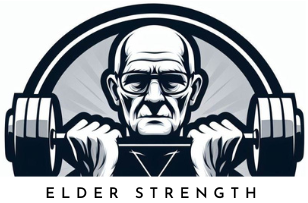
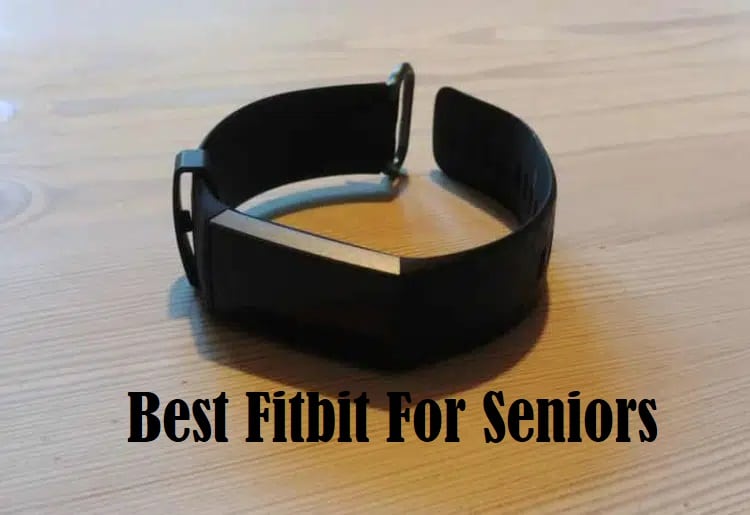
Does this require the use of the data on your smartphone or just bluetooth?
Hi Pat! The Fitbit app requires you to connect to the internet during the installation and setting up the device. You can do this either through WiFi or by activating data on you phone. Hope this answered your question!
Hello,
This is a very informative blog I came across,
Very nice topic of research,
Nowadays the product market is focused on youths and therefore the older crowd is out of the scope of fitness.
This blog is focused on the elderly people which is one of the nicest things i came across the internet.
Thank you for your kind words Akshay! When you think about the fact that seniors are the demographic group that get the most benefits out of exercise it’s mind boggling that there aren’t more people spreading the word. Glad you liked the article.
Just as I was thinking of getting a Fitbit for my aunt, I came across this post. After going through a heart procedure, she needs to keep a close eye on her heart rate. For sure, this will come in handy for her. As a senior, how many steps per day is ideal?
Great to hear you found what you’re looking for Carol! The steps per day is highly individual depending on your overall fitness and health. For generally healthy seniors the typical 10 000 steps that’s recommended for younger adults is a good guideline. But any amount is beneficial for health when compared to inactivity.
My supplemental insurance company has stated that I need to get a fitness tracker. My aunt has has several of the Fitbit models and is using a HR model now. The app is easy to use as I keep track of it for her.
The first one of the Fitbit’s, the charger was most difficult to use, her current one is quite easy. You state that the charger is hard to use on this model, is it any harder than the HR model.
Nice to hear you can get one through your insurance company John! I actually owned the Charge HR version before getting the Charge 3 and the charger is definitely better and easier to use in the Charge 3. The only thing to watch out for is that the charging pins set correctly. The clamp style charger will lock in place and the device will show it’s charging after that. In the Charge HR there was no locking mechanism, so it was possible to lose contact when you set it down. In any case I wouldn’t worry about it in the Charge 3, just pay attention when you set it in the charger and you’ll be fine. All the best!